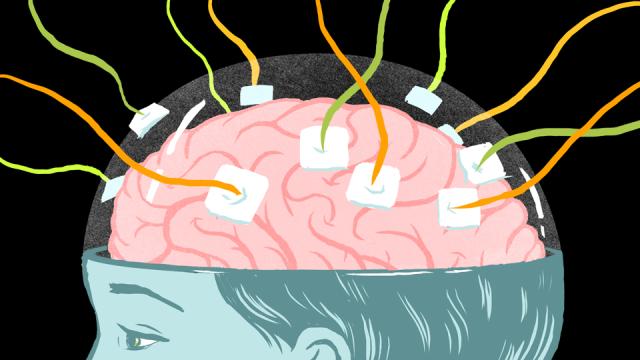After I graduated from university, I took an RA job on campus that gave me a lot of free time but not much pay. So I did the natural thing one does at a research university: I signed up to be a guinea pig for neuroscience experiments.
There were a wide range of studies to choose from, all with their plusses and minuses. Sleep studies paid handsomely, but they required the hassle of spending a night in a hospital room attached to electrodes, leaving putty smeared in your hair. And then there was the constant stream of psychology and decision-making studies, which rarely yielded more than $US20 bucks a pop — barely enough beer money to smooth over the constant anxiety that permeated my post-graduation life. fMRI brain scanning experiments were the best gig, paying as much as $US80 for a few hours of mild discomfort.
I had just graduated with a degree in neurobiology, and you know what? That summer gave me more insight than four years of classes. As a test subject, I witnessed firsthand the chasm between between scientific experiments and real life.
Getting to the MRI lab, buried three or four levels deep in the bowels of the biology research building, felt like a ritual descent. It always ended with me on my back, sliding into the loud, white tomb of the MRI machine.
But one does not simply enter an MRI machine.
First, there is a stripping away of clothes for a hospital gown. (Underwire bras are a big no-no because of the giant magnet that powers the machine.) My glasses (again, metal) were replaced with a standard-issue plastic pair that didn’t correct for my bad astigmatism, so everything still looked fuzzy.
As I lay on a plastic slab that would take me into the machine, my head was wedged into an immobiliser, as even a tiny movement could throw off the brain scan. The study was about vision, and I would be looking at dots moving on a screen. In one hand, I had a keypad with two keys — I would push one or the other depending on the dots’ size. In the other hand, I had a ball to squeeze as a distress signal, in case it got too loud or claustrophobic.
In college seminars, we had discussed the results of countless functional MRI papers around a table — without ever having seen an MRI machine, without realising what an incredibly strange experience it is to be inside one.
I think about this fMRI experience often now, when I write about brain studies as a science journalist. I think about the time I had two electrodes vibrating against my head, as I recited a list of words. I think about clicking through computer screens, playing economic games with strangers in front of other computer screens. I think about waking up in a hospital, electrodes streaming from my hair.
I think about these experiences because they felt nothing like real life. Science requires the stripping away of all variability, until you have just a single, isolated behaviour to test. But in real life, nothing happens in isolation.
In theory, I knew this already. I had put in my hours on the lab bench, hunched over nematodes and fruit flies trying to divine something about brain circuits from their behaviour. I knew it was weird to test fruit flies inside a plastic cage that was half dark, half lit, a crude approximation of shadows and sunlight in nature. But these flies had also spent their entire lives in a plastic tube no bigger than a Push Pop. After a while, I just accepted it as the way science is.
I didn’t feel how weird it was until I became the test subject, seeing how experiments are designed from the other side. The world of a lab experiment is necessarily circumscribed. Vision is studied with dots across a screen, verbal fluency through word lists, and so on. An experiment described in headlines as “telepathy” was actually just two people with electrodes on their heads, whose brain signals were converted into binary flashes of light that took 70 minutes to spell out “hello.” (Convoluted? Yes, you can read about the whole inelegant method here.)
That doesn’t necessarily mean that bizarre experimental situations can’t be applied to real life, but it does mean any single experiment has its limits. An experiment is designed to answer only one small question, one small brick in what will hopefully one day be a great wall of a theory.
The reality of the scientific process is often obscured by jargon and paywalled research papers. Being a test subject is one of the few accessible ways to take a long hard look behind the curtain.
Picture: Tara Jacoby
